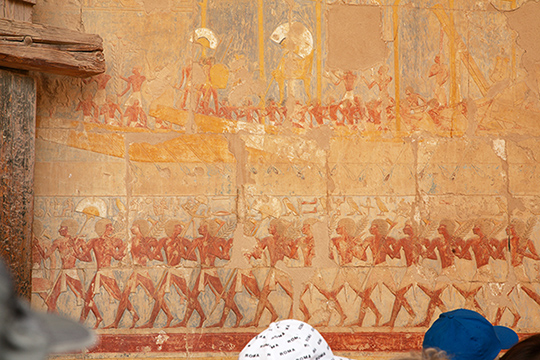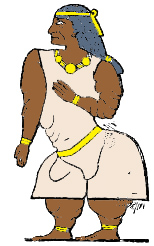HistoryThe Land of PuntPunt was a region and a state in Sudan known in historical sources for trading in incense and other exotic items.1 Most references to Punt come from Old Kingdom and New Kingdom Egyptian sources. The Egyptians led a number of expeditions to Punt, traveling southward along the Red Sea. From there, they brought exotic animals, gold, ebony, elephant tusks, spices, incense and perfumes, and myrrh. The aura of mystery that has been attributed to the land of Punt, in traditional literature, led to a number of wild theories about its location. Claims about the whereabouts of Punt included Yemen, the Persian Gulf, and even India. Evidence—including the Egyptian wall representations, geographical indications, and the list of products and animals obtained from its domain— indicates that Punt was located in eastern Sudan. The geographical boundary features of Punt are described by the Red Sea coasts to the east, the Ethiopian plateau to the south, the flat lands of eastern Sudan to the west, and the savannah in South Sudan to the southwest.
The dark complexions and clothing types of Punt, shown in Egyptian representations, correspond to the depictions of the people of Kush. Also, the fact that the Egyptians frequently traveled to Punt, since the Old Kingdom, suggests that it couldn't have been too far away. Moreover, recent research provided more specific indications on the geographical location of Punt. Closer examination of the fifteenth century BC Egyptian expedition suggests that Punt fell in the coastal region, between the present Sudanese towns of Tokar and Port-Sudan. The inland extension of Punt appears to have been in central Sudan. The products brought from Punt —such as myrrh-trees, elephant tusks, and live animals like giraffes and leopards—are found in the tropical region of central and southern Sudan.
The animals and products of Punt, encompassing elephants and giraffes, were probably brought from the flat savannah environment of South Sudan. There is no evidence that the land of Punt has included regions in what is today the country of Ethiopia. The rugged topography of the Ethiopian plateau could not have supported the type of savannah animals associated with Punt. Throughout history, eastern Sudan has been a major region for mining and quarrying activities. Because of that, the Egyptians and the Kushites have taken interest in "the mining-region of Punt".2 Sources indicate that the Egyptians did not necessarily travel to Punt to import products. For example, it is written in the inscriptions of Pepi-Nakht that the Sixth Dynasty Egyptian king Pepi has led a full military expedition to rescue a nobleman taken captive from Nubia to Punt.3 The area of Kassala, in the central part of eastern Sudan, has recently been identified as an important archeological site for the so called Gash culture—2300-1700 BC.4 The archeology of the area suggests that Kassala was "an important commercial partner of the early Kerma state (ca. 2500-1500 B.C.)" and "inland gateway to the Land of Punt".5
|

